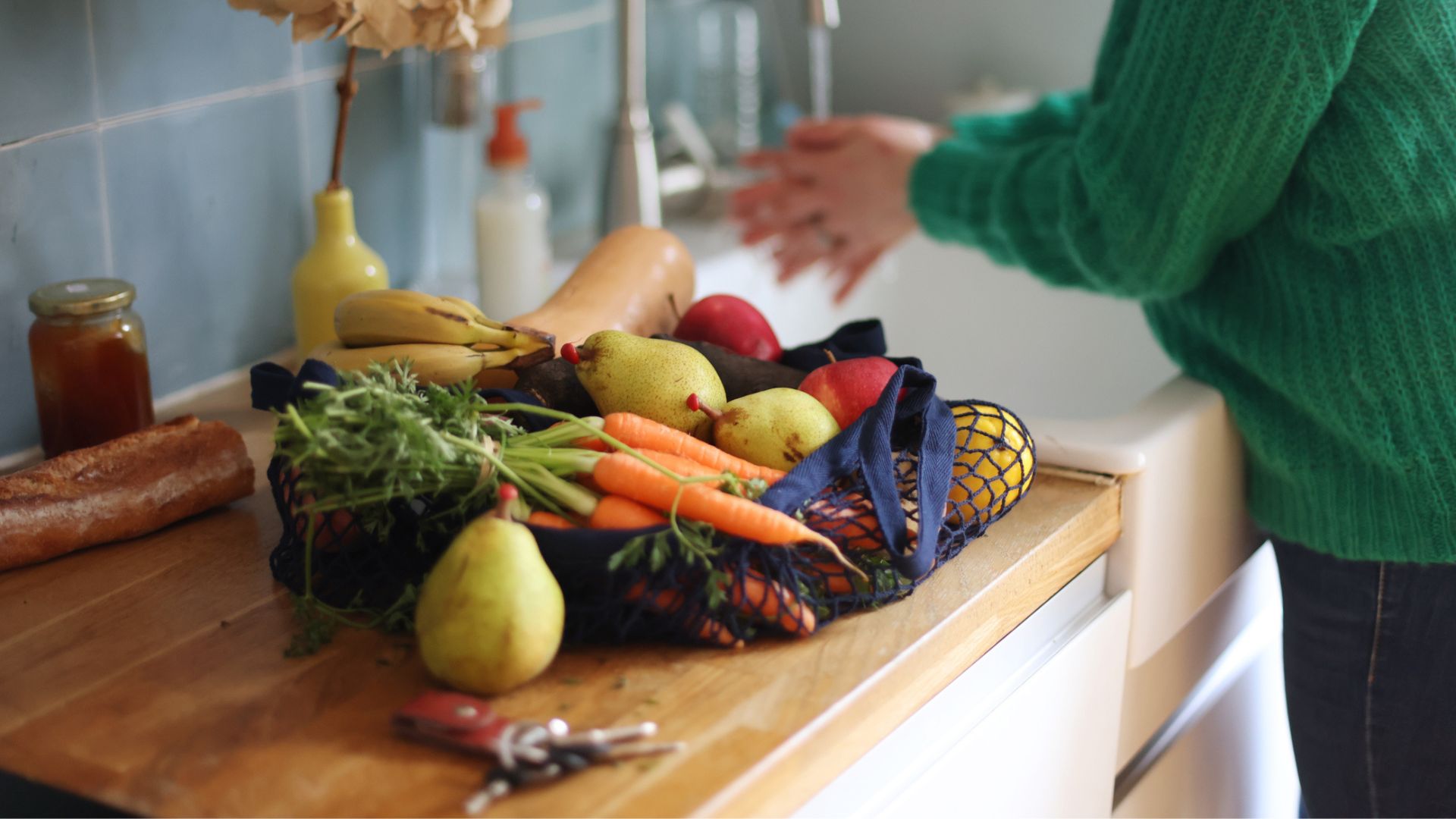How to lower blood pressure: 9 ways to control it quickly and without medication
High blood pressure, or hypertension, is one of the most common health conditions in the UK. Here, doctors reveal how you can lower your blood pressure through easy lifestyle changes


High blood pressure - or hypertension - is one of the more common medical conditions in the UK, with a reported 25% of women diagnosed with it. Luckily, GPs screen for high blood pressure at most check-ups, so if you do have it, it'll be caught quickly and you can reduce your risk with easy lifestyle changes.
First things first - if you're worried about high blood pressure, speak to your doctor. It's a condition that can have serious long-term ramifications for your health, the experts warn, with hypertension being a leading cause of strokes and heart attacks in women. "Blood pressure measures the force that one's heart requires to push blood through the blood vessels and the arteries to supply oxygen and nutrition to the body’s organs," says Mayo Clinic cardiologist Dr Elijah Behr. "If it is too high, it can cause damage to the organs, especially the heart itself, the brain and the kidneys. High blood pressure is also a common cause of cardiovascular disease."
That being said, if you're curious about what it takes to lower your blood pressure, or just want to keep an eye on your health with lifestyle changes you can implement now, we've got you covered with advice from experienced doctors, women's health specialists, and nutritionists.
How to lower blood pressure
1. Stop drinking alcohol
To lower your blood pressure quickly, stop drinking alcohol. As several studies linked to the Cochrane Hypertension Group and Universidade Federal Do Rio Grande Do Sul in Brazil have shown, alcohol can have a serious effect on your heart by narrowing blood vessels, making it harder for the heart to pump blood around the body.
It can also trigger the release of hormones like cortisol and adrenaline, which are linked to stress and raise blood pressure almost immediately.
While it's best to avoid alcohol completely if you're looking to learn how to lower blood pressure, cutting down is a good first step. "You should limit alcohol intake to no more than two drinks twice a week," says Dr Chinelo Ojukuwu, a GP at Pall Mall Medical with over 20 years of experience. "For women, the recommended weekly limit is 14 units spread over three or more days, but minimal consumption is best."
In practical terms, 14 units looks like six pints of 4% strength beer or cider, six medium (175ml) glasses of standard 13% wine, 10 small glasses of lower-strength wine, 12 measures (25ml) of spirits like gin or vodka, or seven double measures of spirit.
Sign up to our free daily email for the latest royal and entertainment news, interesting opinion, expert advice on styling and beauty trends, and no-nonsense guides to the health and wellness questions you want answered.
2. Relax
While it's important to learn how to lower your cortisol levels and prevent stress on a longer-term basis, relaxing can help lower blood pressure quickly.
"Practice stress-reduction techniques such as mindfulness, meditation, deep breathing exercises, yoga, or hobbies that promote relaxation," says Dr Shirin Lakahni, a registered GP and women's health specialist.
3. Drink some water
If your blood pressure has risen suddenly, research suggests that drinking a glass of water - and maintaining a healthy water intake throughout the day - can lower it.
A study from Central South University found that drinking the recommended six to eight cups of water per day had a "favourable" effect on blood pressure in adults. However, the people selected for the study were also 'low tea consumers', meaning they had a lower level of caffeine in their system, suggesting that tea and coffee - which are normally included in the recommended fluid intake by the NHS - may be excluded from this.
"When it comes to drinks, consuming caffeine and alcohol may increase your blood pressure," says Vitality's registered nutritionist James Vickers. "It’s advisable to limit the amount you consume. Instead, reach for water or juices such as apple, tomato or pomegranate juice which can all help to lower your blood pressure.
4. Get some sleep
If you're experiencing high blood pressure, learning how to sleep better is one of the best ways to lower it. "Aim for seven to nine hours of quality sleep per night," says Dr Lakhani. "Poor sleep can contribute to weight gain, high blood pressure, and other risk factors for heart disease."
Sleep and stress are also innately linked. You might feel more stressed if you consistently aren't sleeping very well, and vice versa. Some symptoms of perimenopause can make sleep harder to come by as well, so speak to your doctor about possible further lifestyle recommendations and treatments if this is the case.

A blood pressure monitor is used to determine if your blood pressure is higher than it should be.
This article is for general interest and is not intended to suggest a course of action that might be suitable for you. Always consult a licensed healthcare professional before making decisions concerning your health and wellbeing.
5. Do some exercise
Exercise is both a quick fix for high blood pressure and a way to reduce hypertension in the future. "Walking, swimming, and cycling are all beneficial exercises as they get the heart pumping but are low impact, which means they are gentler on the joints and may be suitable for women experiencing musculoskeletal issues too," says Dr Lakhani.
"Weight training [also known as resistance or strength training] can be beneficial for women as well, as it helps to maintain muscle mass that naturally decreases throughout menopause," she notes.
The NHS recommends at least 150 minutes of moderate-intensity exercise every week. This means working out to the level where you feel slightly uncomfortable but can still maintain a conversation. These minutes can be spread throughout the week by going swimming every day, for example, or in three longer sessions.
6. Lower your stress levels
Chronic stress - that's stress that's ongoing for weeks, months, and potentially even years, leading to burnout from work and other serious mental health conditions - can have a seriously negative impact on heart health. So as well as practising relaxation tips in the moment, it's important to reduce stress on a longer-term basis, says Dr Lakhani.
7. Limit salty foods
Salt gives our food flavour, but it's something to avoid if you're looking to learn how to lower blood pressure. Salt is sodium, which is perfectly fine in smaller amounts but if you eat a lot of salty food, it can cause the body to retain fluid (which also causes bloating). This increases blood volume and pressure exerted against the blood vessels' walls.
"You can try switching salt with things like herbs and spices when you cook to ensure you don't miss out on flavour," says Vickers.

Eating plenty of fruits and vegetables is a good way to lower high blood pressure.
8. Eat a heart-healthy diet
However, the experts say the best way to lower blood pressure in the long term is to change your lifestyle. Most importantly, Dr Lakhani says: "Cut your sodium intake and eat more fruits, vegetables, protein, and fibre."
It's also a good idea to limit processed foods, refined carbohydrates, added sugars, and 'unhealthy' fats, she notes. "These can contribute to inflammation, weight gain, and an increased risk of heart disease. Eating a varied and balanced diet, and maintaining a healthy weight and active lifestyle, can help support heart health."
9. Talk to your doctor
As with all medical concerns, it's best to speak to your doctor if you're concerned about high blood pressure and want to know how to lower it effectively. They'll be best placed to answer your questions.
Your doctor can also suggest alternatives if lifestyle changes don't do the trick. ""You might be prescribed antihypertensives to help keep your blood pressure under control, says Dr Lakhani.
"The choice very much depends on how well an individual will tolerate the medication, especially if there are side effects," adds Dr Behr. "Very occasionally, keyhole procedure can be untaken to reduce very resistant blood pressure, known as renal artery denervation or ablation."
What foods can help lower blood pressure?
- Fatty fish: Fish like salmon, tuna and mackerel are great sources of omega-3 fatty acids, which can help lower blood pressure.
- Leafy green vegetables: This includes spinach and kale, which are rich in various vitamins and minerals.
- Sources of healthy fats: Nuts, olive oil, avocado, and seeds, for example.
- Wholegrains: Grains such as brown rice, barley, quinoa, and bulgar all count as wholegrains.
- Low-fat dairy: Fat-free or 1% yoghurt, cheese, and milk can be beneficial foods for those who want to lower their blood pressure.
- Sources of lean protein: Chicken, fish, turkey breast, beans, lentils, and chickpeas are all examples of lean protein.

Grace Walsh is woman&home's Health Channel Editor, working across the areas of fitness, nutrition, sleep, mental health, relationships, and sex. She is also a qualified fitness instructor. In 2025, she will be taking on her third marathon in Brighton, completing her first ultra marathon, and qualifying as a certified personal trainer and nutrition coach.
A digital journalist with over seven years experience as a writer and editor for UK publications, Grace has covered (almost) everything in the world of health and wellbeing with bylines in Cosmopolitan, Red, The i Paper, GoodtoKnow, and more.